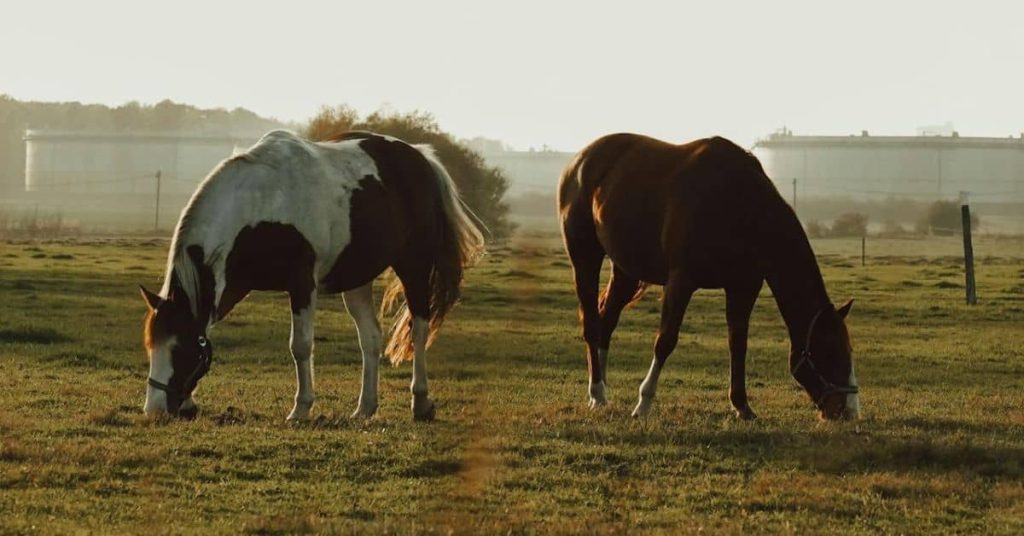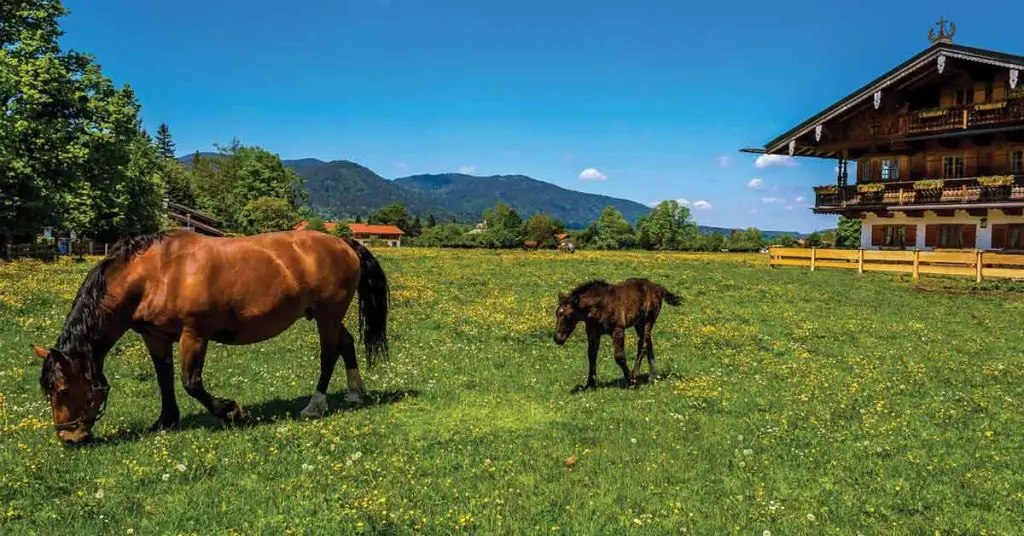Why Homesteading in Missouri Is an Attractive Choice
If you’ve ever dreamed of a life rooted in self-sufficiency, fresh air, and a strong connection to the land, homesteading in Missouri may be calling your name. With its rich agricultural history, welcoming rural communities, and wide-open spaces, Missouri has quietly become one of the most appealing states for modern homesteaders.
But jumping into homesteading isn’t just about buying a piece of land and planting a garden—it’s about understanding the landscape, climate, legal requirements, and the day-to-day realities of building a resilient life off the land.
This guide is designed to walk you through the practical essentials of homesteading in Missouri, from why the state’s climate and affordability make it such an attractive choice, to how you can get started finding the right property, raising crops and animals, and thriving as a self-sufficient household. Whether you’re a first-time homesteader or someone looking to relocate to the Show-Me State, you’ll find useful insights, real-world tips, and resources to help you turn your homesteading goals into a reality.
Ready to explore why Missouri is such a standout destination for homesteaders? Let’s dive in.
Understanding Missouri Homesteading Laws
Before you break ground or even buy property, it’s crucial to understand the legal landscape of homesteading in Missouri. Missouri has a rich agricultural tradition, but like every state, it comes with its own set of rules and benefits that can shape your homesteading journey. Knowing these details upfront can save you headaches down the road and help you make the most of your land and investments.
What Are the Requirements for a Homestead in Missouri?
Missouri doesn’t have a formal “homesteading act” like some Western states, but anyone can set up a homestead if they comply with local laws and zoning regulations.
Typically, this means:
- Owning or legally occupying the land you want to use as a homestead.
- Following county zoning rules about residential use, farming, livestock, and home-based businesses.
- Getting required permits for wells, septic systems, and construction.
It’s smart to check with your local county offices early on, especially if you plan to live off-grid or keep animals, as some areas may have specific restrictions or guidelines.
Can You Claim Land in Missouri?
While the romantic idea of “staking a claim” still floats around, the reality is that most land in Missouri is already privately owned. That said, adverse possession laws—often called “squatters’ rights”—allow someone to claim ownership of abandoned land if they openly occupy and improve it for a set period, typically 10 years, without the owner’s permission.
However, navigating adverse possession is legally tricky and not recommended as a primary strategy for homesteading. Instead, focus on land auctions, tax-delinquent properties, or distressed sales where ownership can be transferred cleanly.
Is There Free Land for Homesteading?
Missouri does not currently offer formal free land programs, but some small towns and counties occasionally run incentive programs to attract residents and revitalize rural areas. These offers can include discounted or free lots with conditions, such as building within a set timeframe or maintaining the property. Keep an eye on local government websites and real estate listings for these rare opportunities.
Homestead Exemption in Missouri
One major legal perk of homesteading in Missouri is the homestead exemption, which protects a portion of your home’s value from creditors in case of financial hardship.
As of current law:
- Homeowners can exempt up to $15,000 of equity in their primary residence.
- Married couples filing jointly can double this amount to $30,000.
This protection applies whether you live in a house, mobile home, or manufactured home, offering valuable peace of mind if you’re investing heavily in your homestead.
Missouri Cottage Food Laws
Missouri’s cottage food laws are a blessing for homesteaders who want to dip their toes into selling homemade goods without needing a commercial kitchen license.
Here’s what you should know:
- Allowed foods: Baked goods, jams, jellies, honey, and dry herbs are generally allowed under Missouri’s cottage food rules.
- Sales locations: Typically, you can sell these items from your home, at farmers’ markets, and community events.
- Labeling requirements: You must label your products with your name, address, and a statement like “This product is not inspected by the Department of Health.”
- Food safety basics: While not always required by law, it’s smart to follow best practices like using clean equipment, wearing gloves, and storing items properly.
Pro tip: Check with your local county health department because some counties have stricter rules or additional permits.
Selling at Farmers’ Markets and Online
If you’re ready to step beyond cottage foods or want to sell items like eggs, produce, or handmade crafts, farmers’ markets and online platforms offer great opportunities.
Things to keep in mind:
- Farmers’ markets: Most Missouri markets require vendors to register, pay a booth fee, and provide proof of liability insurance. If you’re selling processed or value-added products (like cheese or canned vegetables), you may need additional licenses.
- Egg sales: Missouri law requires you to grade and candle eggs before selling them to the public. Look into state guidelines for small egg producers to stay compliant.
- Online sales: Selling across state lines (even through Etsy or Facebook Marketplace) often brings in federal regulations, including labeling and shipping rules. It’s smart to research these carefully or start with in-state sales first.
Personal insight: Many homesteaders start small at local markets or farm stands before venturing online. This gives you a chance to test products, build a loyal customer base, and get comfortable with the paperwork side of things.
Understanding these legal basics can help you homestead with confidence and protect what you’re building for the long term. Whether you’re buying a few acres or transforming a small-town lot, knowing the legal side of homesteading in Missouri will set you up for success.
Finding and Buying Land for Your Missouri Homestead
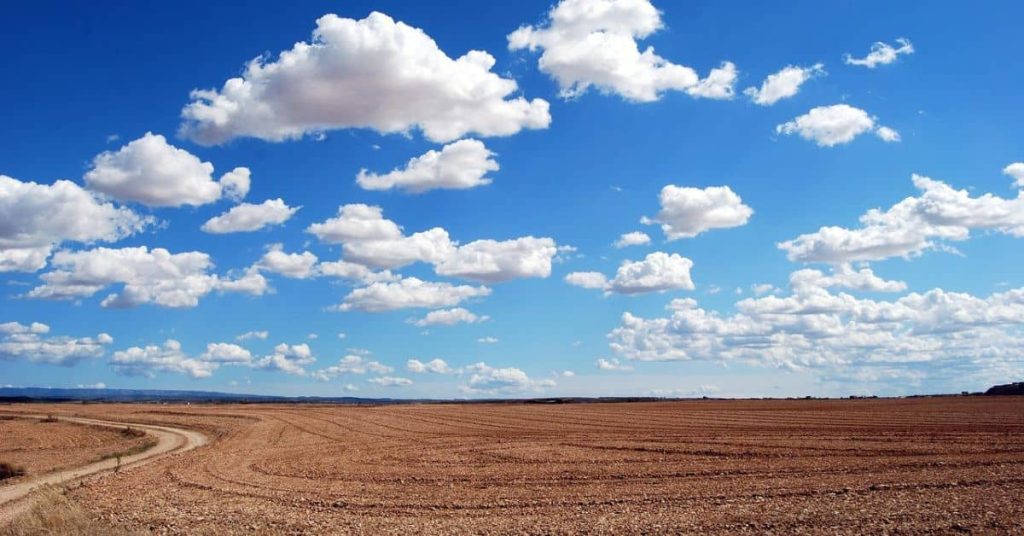
Finding the right piece of land is one of the most exciting—and sometimes overwhelming—parts of homesteading in Missouri. Whether you’re looking for a wooded retreat, fertile farmland, or a quiet spot near a small town, Missouri offers a wide range of affordable options. This section will walk you through where to look, what to consider, and how to navigate the buying process.
Best Regions and Counties for Homesteading
Missouri’s diverse landscape means you can tailor your homestead to your lifestyle and goals.
- Southern Missouri (Ozarks region) is known for rolling hills, forests, and springs. It’s a great choice for off-grid living, timber, and small-scale livestock.
- Northern Missouri offers fertile farmland, making it ideal for row crops, pastures, and large gardens.
- Central Missouri strikes a balance between rural charm and access to urban hubs like Columbia and Jefferson City.
- Western Missouri near Kansas City has affordable acreage but tends to be more developed, so check local zoning carefully.
Some of the most homesteader-friendly counties include Oregon, Howell, Shannon, Texas, and Wright counties, where you’ll find lower land costs, fewer restrictions, and a strong agricultural tradition.
Homesteading in Missouri for Sale vs. Free Land Opportunities
Most people will need to buy their homestead land, but the good news is Missouri remains one of the most affordable states for rural properties.
You can often find:
- Acreage under $5,000 per acre, sometimes even cheaper in remote areas.
- Owner-financed properties, allowing you to pay overtime.
- Land auctions or tax-delinquent sales, which can yield bargains if you’re willing to do some research.
While Missouri doesn’t offer formal free land programs, occasionally small towns offer incentives, such as giving away small residential lots to newcomers willing to build. Check town websites and local news for announcements—these programs come and go.
How to Buy Abandoned Land or Properties
Abandoned farms and houses may seem like hidden treasures but buying them takes careful due diligence.
Here’s how to approach it:
- Check county tax records to identify properties with unpaid taxes. Counties sometimes sell these at auction.
- Drive the area or talk to locals—small communities often know which properties are empty.
- Work with a local real estate agent or attorney to handle legal steps and ensure clean title transfer.
- Inspect carefully before purchase; abandoned properties can have hidden costs like cleanup, structural damage, or code violations.
Buying abandoned land or a distressed property can be a great way to start homesteading affordably but go in with your eyes open.
Finding the right land in Missouri can be an adventure, but with patience, research, and a little local guidance, you can secure a homestead that matches your dreams and budget.
Building a Sustainable Missouri Homestead
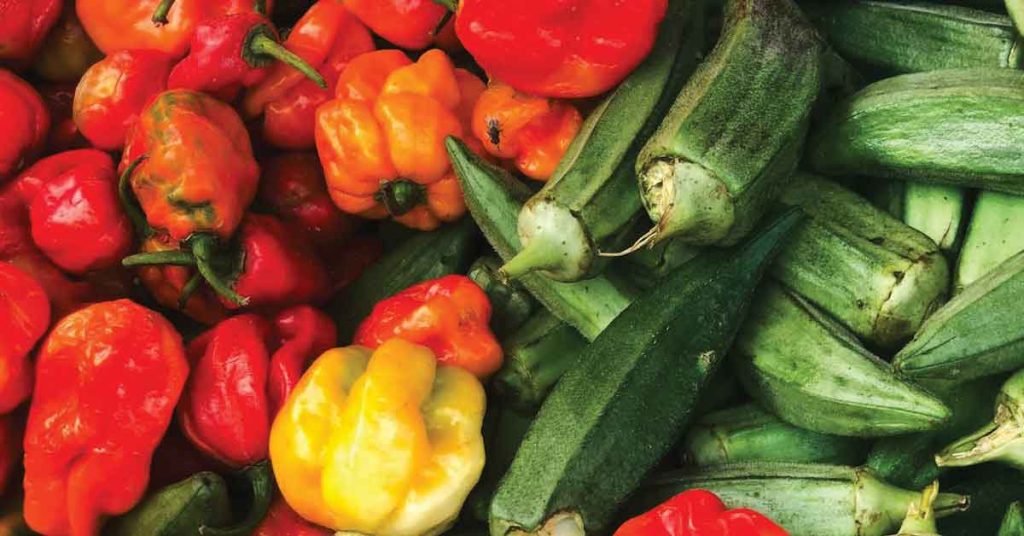
Once you’ve secured your land, the next step in homesteading in Missouri is turning it into a productive and sustainable home. Missouri’s climate, soil, and natural resources offer a wide range of possibilities for both beginners and seasoned homesteaders. Here’s how you can make the most of them.
Best Crops for Missouri’s Climate
Missouri’s climate—marked by warm summers, ample rainfall, and a long growing season—makes it a gardener’s dream.
- Warm-season vegetables: Tomatoes, peppers, sweet corn, green beans, and okra thrive in Missouri’s hot summers.
- Cool-season crops: Start leafy greens like lettuce, kale, and spinach in early spring or fall to take advantage of cooler temperatures.
- Perennials: Asparagus, rhubarb, and strawberries are great investments that will return year after year.
- Fruit trees: Apples, peaches, plums, and cherries do well across most of the state; just be sure to select varieties suited for your USDA zone.
Personal tip: Consider planting a diverse garden to stagger harvest times and reduce pest issues naturally.
Recommended Livestock for Beginners
Raising livestock is a key part of building a self-sufficient homestead, and Missouri offers plenty of options.
- Chickens are the classic starter animal—they’re hardy, adaptable, and provide eggs, meat, and pest control.
- Goats are excellent for milk, meat, and brush clearing, especially on Missouri’s hilly land.
- Rabbits are a quiet, space-efficient meat option and are popular among urban and rural homesteaders alike.
- Cattle and Pigs can be rewarding, but they require more space, infrastructure, and experience, so they’re usually better for intermediate or advanced homesteaders.
Expert advice: Start small, learn as you go, and scale up once you’re confident handling daily chores and seasonal needs.
Missouri-Specific Foraging and Wildcrafting
One of the best-kept secrets of homesteading in Missouri is the wealth of edible and medicinal plants found right in the wild.
- Morel mushrooms are a prized spring delicacy and can be found in wooded areas.
- Pawpaws (often called “Missouri bananas”) are a native fruit that grows along streams and shaded forests.
- Persimmons, blackberries, and elderberries offer nutritious, wild food you can forage with minimal effort.
- Medicinal plants like echinacea, yarrow, and wild mint are common across the state and useful for home remedies.
Personal insight: Foraging isn’t just about free food—it deepens your connection to the land and teaches observation skills that will improve every part of your homesteading journey.
A sustainable Missouri homestead blends smart planting, responsible animal care, and the incredible bounty nature already provides. By working with the climate and landscape instead of against it, you can build a thriving, resilient homestead that feeds your family and supports your long-term goals.
Off-Grid Living and Renewable Energy Options
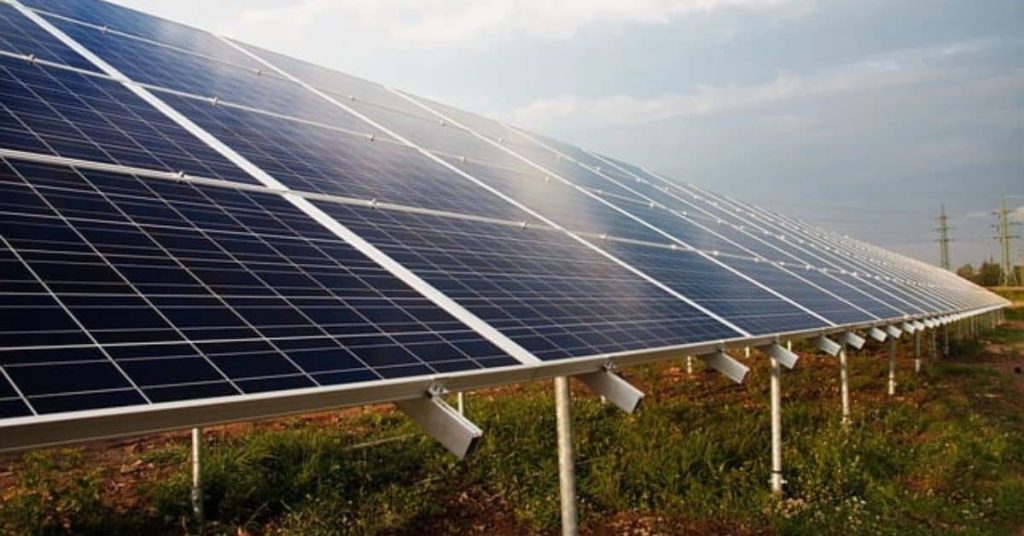
For many passionate about homesteading in Missouri, going off-grid is the ultimate goal—a way to reduce reliance on public utilities, lower expenses, and live more in tune with nature. Thanks to Missouri’s diverse landscape and climate, homesteaders here have a variety of renewable energy options to help achieve true self-sufficiency.
Solar, Wind, and Geothermal Systems
Missouri’s climate lends itself well to several renewable energy solutions.
- Solar power is by far the most popular off-grid option. With around 200 sunny days per year in much of the state, a well-designed solar system can meet most, if not all, of a homestead’s electrical needs. For best results, position panels on a south-facing roof or open field with minimal shade.
- Wind power works well in parts of northern and western Missouri, where open plains and hilltops experience steady breezes. Small-scale wind turbines can supplement solar setups, especially during cloudy stretches when sunlight is scarce.
- Geothermal systems are less common but worth considering for heating and cooling. By tapping into the earth’s stable underground temperatures, these systems can significantly reduce your energy bills year-round.
Personal tip: Many homesteaders combine two or more systems (like solar plus wind) to create a hybrid setup that’s more resilient during seasonal changes or weather disruptions.
Renewable Energy Grants and Tax Credits
One of the smartest ways to make off-grid living affordable is by tapping into financial incentives designed to promote renewable energy.
- Federal tax credits: The federal government currently offers a Residential Clean Energy Credit, which can cover up to 30% of the cost of installing solar, wind, or geothermal systems on your property.
- Missouri state programs: Some local utilities and state agencies offer additional rebates or performance-based incentives for renewable energy systems. Programs change frequently, so check with the Missouri Division of Energy or your local power cooperative for current offerings.
- USDA Rural Energy for America Program (REAP): This program provides grants and loans to agricultural producers and rural small businesses—perfect for homesteaders looking to install renewable energy systems on their land.
Expert advice: Before investing in any system, carefully assess your homestead’s energy needs, budget, and local conditions. It’s often best to start small—perhaps with a solar water heater or a single wind turbine—and expand as you gain experience and confidence.
Off-grid living in Missouri is not just a dream—it’s an achievable, empowering goal. With careful planning, smart use of natural resources, and a little help from government incentives, you can build a homestead that’s resilient, sustainable, and fully aligned with your self-sufficient lifestyle.
Practical Skills and Daily Life on the Homestead
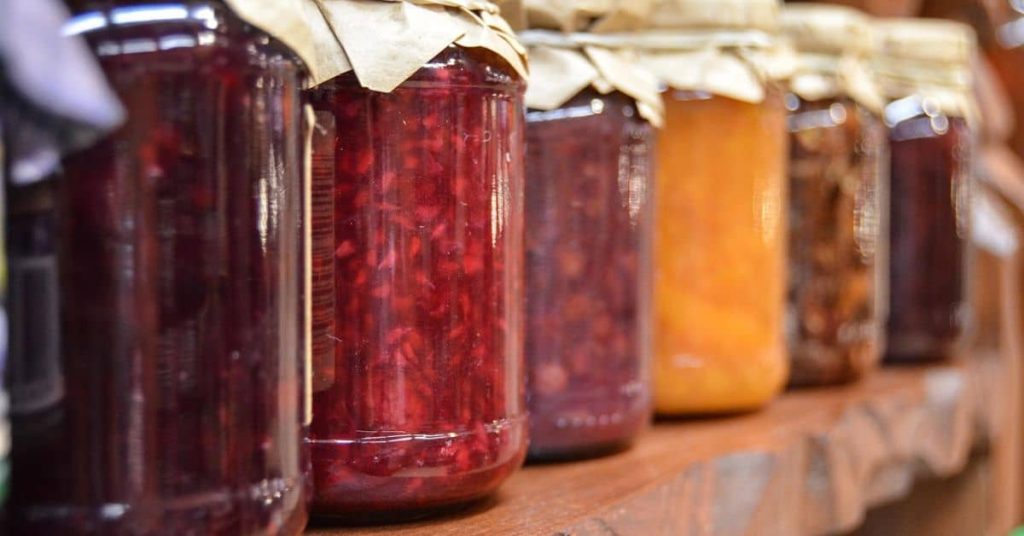
Life on a homestead in Missouri is as much about the rhythm of daily tasks as it is about the big picture of self-sufficiency. Beyond growing crops and raising animals, you’ll quickly discover that it’s the small, practical skills that keep the homestead running smoothly—and these skills often become some of the most rewarding parts of the lifestyle.
Homeschooling and Family Life on a Missouri Homestead
For many families, homesteading in Missouri goes hand in hand with homeschooling. The flexibility of rural living allows parents to tailor their children’s education around farm tasks, nature studies, and hands-on learning.
Missouri has relaxed homeschooling laws compared to many states. Families must provide at least 1,000 hours of instruction annually, with documentation, but they have freedom over curriculum and teaching style. Many homesteaders integrate farm life into their lessons—think biology from the garden, math from calculating feed, or history through traditional skills like blacksmithing or quilting.
A personal note: Many Missouri homesteading families build strong community ties through local homeschool co-ops, 4-H clubs, and church groups, creating both educational support and lifelong friendships.
Food Preservation (Canning, Drying, Freezing)
Preserving the bounty of your garden is key to thriving year-round. Missouri’s growing season can be abundant, but winter comes fast—making food preservation a cornerstone of homestead life.
- Canning is the most popular method, especially for tomatoes, green beans, jams, and salsas. Invest in a pressure canner for low-acid foods to safely preserve them.
- Drying herbs, peppers, apples, or mushrooms helps maximize shelf life without taking up freezer space.
- Freezing works well for berries, corn, or meat, but be sure you have a backup power plan if you’re off-grid.
Tip: Missouri’s humid summers can sometimes challenge drying projects, so consider using a dehydrator for consistent results.
DIY Projects and Repairs
A big part of the homesteading in Missouri experience is learning how to fix things yourself. From mending fences and repairing chicken coops to installing rainwater collection systems or even building furniture, DIY skills save money and reduce dependence on outside contractors.
Start with small, achievable projects, like building raised beds or compost bins, and work your way up. Many homesteaders swear by YouTube tutorials and local workshops to pick up new skills—Missouri even has occasional rural skills festivals where you can learn everything from blacksmithing to soapmaking.
Personal advice: Embrace the mindset of a lifelong learner. You don’t have to know it all when you start, but you’ll gain invaluable confidence and resourcefulness as you tackle new challenges along the way.
Mastering these everyday skills not only makes your homestead more resilient, but it also deepens your connection to the land and your family’s self-sufficient journey.
Managing Challenges on a Missouri Homestead

While homesteading in Missouri offers freedom, fulfillment, and the joys of self-reliance, it also comes with real challenges. Knowing how to handle these ups and downs can make the difference between thriving and feeling overwhelmed. Let’s look at some of the most common hurdles—and how seasoned Missouri homesteaders navigate them.
Managing Wildlife and Pests
Missouri’s abundant wildlife is both a blessing and a challenge. You’ll encounter deer, raccoons, rabbits, and groundhogs that see your garden as an open buffet. Add in pests like squash bugs, Japanese beetles, and ticks, and you’ve got a full-time management job.
Practical strategies include:
- Fencing and barriers: A well-built fence (and sometimes electric fencing) is often the first line of defense against deer and larger animals.
- Companion planting and natural deterrents: Planting marigolds, garlic, or mint can help repel some insect pests.
- Livestock guardians: Many Missouri homesteaders keep dogs, geese, or even donkeys to help protect poultry and smaller livestock from predators.
Personal tip: Walk your property regularly. Early signs of wildlife damage or pest infestations are easier to fix before they become major problems.
Preparing for Missouri’s Extreme Weather
Missouri’s climate keeps homesteaders on their toes—hot, humid summers; bitter cold winters; and unpredictable spring storms, including tornadoes.
Here’s how locals prepare:
- Heat: Provide ample shade, fresh water, and proper ventilation for both crops and livestock during the summer.
- Cold: Insulate coops and barns, stockpile firewood, and winterize water systems to prevent freezing.
- Storms: Invest in a good weather radio, have a storm shelter plan, and secure lightweight structures like hoop houses or greenhouses against strong winds.
From personal experience: Missouri’s weather swings can be sudden. It’s worth developing a seasonal preparedness checklist so you’re not caught scrambling at the last minute.
Coping With Isolation and Burnout
Homesteading offers peace and solitude—but too much isolation can wear on even the most independent spirits. Add in the long hours, physical demands, and occasional failures, and burnout can sneak up fast.
Ways to stay balanced:
- Build community: Join local homesteading groups, farmers markets, or online forums to share advice and encouragement.
- Take breaks: It’s okay to rest—whether it’s a short-day trip, a hobby off the farm, or simply sitting on the porch at sunset.
- Set realistic goals: You don’t have to “do it all” in your first year. Focus on what matters most to you and expand slowly.
A final word of advice: Remember why you chose this life. Celebrate the small wins, lean on your community, and give yourself grace when things don’t go as planned.
Designing for Sustainability

A truly successful homesteading in Missouri journey isn’t just about producing your own food—it’s about doing it in a way that’s sustainable for both you and the land. By weaving smart design and ecological thinking into your homestead, you can reduce waste, conserve resources, and make your work easier over the long term.
Integrating Permaculture Principles
Permaculture is more than just a gardening buzzword—it’s a mindset that can transform how you approach your Missouri homestead. At its heart, permaculture is about working with nature instead of against it.
Here’s how you can bring it to life:
- Design with nature’s patterns: Observe how water flows on your land, where the wind hits, and where the sun shines longest. Use that knowledge to place your gardens, livestock shelters, and trees.
- Create multi-purpose systems: Chickens can provide eggs, pest control, and manure; trees can offer fruit, shade, and windbreaks.
- Build soil health naturally: Use composting, mulching, and no-till gardening to nourish the soil rather than deplete it.
Personal insight: Many Missouri homesteaders start small—perhaps with a permaculture herb spiral or a small food forest—and gradually scale up as they learn what works on their land.
Water Management and Drought-Resistant Practices
Missouri’s weather can swing from heavy rains to sudden dry spells, making smart water management critical.
Practical strategies include:
- Rainwater harvesting: Install gutters and rain barrels to collect roof runoff. This stored water can help keep gardens alive during dry weeks.
- Swales and berms: Shaping the land to slow and capture rainwater helps reduce erosion and maximize soil moisture.
- Choose drought-tolerant varieties: Incorporate native plants and resilient crop types that handle Missouri’s occasional droughts without constant watering.
- Efficient irrigation: Drip irrigation systems deliver water directly to roots, minimizing evaporation and waste.
A note from experience: It’s tempting to focus on expanding your garden or adding livestock, but investing early in water management pays off enormously when summer heat hits.
Community Connections and Support

One of the most beautiful parts of homesteading in Missouri is that you don’t have to do it alone. While homesteading is often associated with independence, having a strong network of like-minded people can make the journey far more rewarding, resilient, and fun.
Finding Local Gardening and Homesteading Groups
Missouri has a thriving community of gardeners, farmers, and homesteaders eager to share advice and lend a helping hand. From small-town garden clubs to regional permaculture groups, you can usually find neighbors who are happy to swap tips, troubleshoot problems, or just share stories over coffee.
Some places to start:
- Extension offices: The University of Missouri Extension is an incredible resource offering workshops, gardening classes, and networking opportunities.
- Local farm supply stores: Check the bulletin board—they often post meeting times for local clubs.
- Facebook groups and Meetups: Search for “Missouri homesteaders” or “Missouri gardening” to connect with groups near you.
Seed Swaps and Resource Sharing
Seed swaps are more than just a practical way to diversify your garden—they’re community-building events. Across Missouri, especially in spring, you’ll find events where locals come together to exchange seeds, cuttings, plants, tools, and even livestock supplies.
Why it matters:
- Preserving local varieties: You’ll discover heirloom seeds and plants adapted to Missouri’s climate that you can’t find in catalogs.
- Saving money: Instead of buying everything new, you can trade for what you need.
- Building trust: These events often lead to ongoing relationships where folks help each other out year-round.
Personal tip: Bring extra seedlings or saved seeds to share—it’s a great way to make new friends and build goodwill.
Missouri Homesteading Trends on Social Media and YouTube
Even if you’re tucked away on a quiet acreage, the online homesteading world can offer a wealth of inspiration. Missouri has its fair share of YouTube creators, TikTok gardeners, and Instagram homesteaders sharing everything from chicken coop builds to no-till gardening hacks.
Some trends gaining traction:
- Backyard beekeeping: More Missourians are taking up beekeeping to support pollinators and enjoy homegrown honey.
- Regenerative gardening: Videos on permaculture, composting, and soil health are booming on platforms like YouTube.
- Mini homesteads: Urban and suburban Missourians are showing how to homestead on small lots, making the movement accessible to more people.
Pro tip: Engage with these creators by commenting or asking questions—they often respond and love connecting with local followers.
Generating Extra Income from Your Homestead

For many who dive into homesteading in Missouri, the dream isn’t just about self-sufficiency—it’s also about creating a livelihood that’s meaningful, sustainable, and rooted in the land. Whether you want to supplement your family income or turn your homestead into a full-fledged business, there are plenty of creative ways to earn extra cash without sacrificing your values.
Agritourism and Hosting Farm Stays
Missouri’s rolling hills, lush farmland, and charming small towns make it a perfect setting for agritourism. Inviting guests onto your homestead can provide a steady income stream while allowing you to share your way of life with others.
Ideas to explore:
- Farm stays or bed-and-breakfasts: Set up a cozy guest cabin or farmhouse room and welcome visitors looking for a rustic retreat.
- Pick-your-own operations: Whether it’s strawberries in spring, pumpkins in fall, or Christmas trees in winter, U-pick farms draw families and tourists alike.
- Seasonal festivals or farm dinners: Host harvest celebrations, farm-to-table dinners, or corn mazes to bring people onto your land.
A personal tip: Start small and test the waters. Even offering occasional weekend farm stays or seasonal events can give you a feel for agritourism without overwhelming your household.
Workshops, Tours, and Online Courses
If you’ve been homesteading in Missouri for a few years, you probably have skills others would love to learn. Why not turn that hard-earned knowledge into a side business?
Practical ideas:
- Hands-on workshops: Teach others how to can tomatoes, build a chicken tractor, make goat cheese, or grow a no-till garden.
- Farm tours: Offer guided tours that explain your practices—kids, school groups, and gardening clubs are often eager to visit.
- Online courses or e-books: For those comfortable with technology, share your expertise beyond Missouri’s borders through digital offerings.
One piece of advice: Focus on what you’re genuinely passionate about. Not only will it be more enjoyable for you, but that enthusiasm will shine through and attract eager learners.
Resources and Expert Tools
No matter where you are on your homesteading in Missouri journey—whether you’re just dreaming or already knee-deep in soil and chores—having access to the right resources can save you time, money, and frustration. Missouri offers an incredible network of expert tools, local agencies, and online communities that can help you homestead smarter and more confidently.
USDA and Missouri Extension Services
The USDA and the Missouri Extension Service are two of the most reliable and practical resources for homesteaders in the state.
- USDA (United States Department of Agriculture): The USDA provides detailed guides on soil health, conservation practices, organic certification, farm loans, and grants. Whether you’re setting up your first garden or scaling up to sell farm products, you’ll find expert-backed resources to guide you. Learn more: USDA
- Missouri Extension Service: Operated through the University of Missouri, the Extension Service offers research-based support tailored to local conditions. From soil testing and pest management to homesteading workshops and webinars, this resource connects you to the latest tools and community experts. Learn more: Missouri Extension Service
A tip from seasoned homesteaders: Don’t hesitate to reach out to your county extension office—they’re often happy to answer questions and help troubleshoot specific challenges on your land.
Online Communities and Recommended Reading
Sometimes, the best advice comes from fellow homesteaders. Online forums, YouTube channels, and social media groups dedicated to homesteading in Missouri are full of practical tips, encouragement, and troubleshooting help.
- Reddit’s Missouri Homesteading Threads: Real stories, challenges, and advice from locals.
- Facebook Groups and Regional Forums: Join groups like “Missouri Homesteaders” or “Midwest Off-Grid Living” to connect with others nearby.
- Books and Blogs: Look for titles focused on Midwest homesteading or subscribe to reputable blogs that cover Missouri-specific gardening, livestock, and DIY topics.
Missouri Farm Bureau and Farmland Preservation
For those looking to deepen their roots or advocate for agricultural issues, the Missouri Farm Bureau and Farmland Preservation Programs offer essential support.
- Missouri Farm Bureau: They advocate for local farmers, offer insurance programs, and keep members informed about agricultural policy. They also host local events where you can network with other homesteaders.
- Farmland Preservation Programs: These initiatives aim to protect Missouri’s agricultural heritage by helping farmers conserve land and maintain its productivity for future generations.
Conclusion: Your Next Steps to Success in Homesteading in Missouri
As you set out or continue your path of homesteading in Missouri, remember that success comes from a mix of preparation, resilience, and a willingness to learn. This guide has walked you through everything from understanding local laws and choosing the right land to raising livestock, harnessing renewable energy, and connecting with your local homesteading community.
Key Takeaways
Missouri offers a unique blend of affordable land, diverse climates, and a supportive agricultural network, making it one of the most attractive states for aspiring homesteaders. By paying attention to zoning laws, climate considerations, and local resources, you can set yourself up for a thriving and sustainable homestead. Don’t forget the importance of diversifying your income, whether through farm stays, workshops, or farmers’ markets.
Start Small and Grow Confidently
If there’s one lesson experienced homesteaders often share, it’s this: start small. You don’t need to conquer every project in your first season. Focus on learning the land, mastering a few core skills, and gradually expanding. Over time, your confidence—and your homestead—will grow in ways that are both practical and deeply rewarding.
Share Your Missouri Homesteading Journey with Us
We’d love to hear from you! Whether you’re just starting or have years of dirt under your nails, your experiences can inspire and help others. Share your Missouri homesteading successes, challenges, and tips in local groups, online forums, or even by starting your own blog or social media channel. Together, we can build a stronger, more resilient homesteading community across the state.
Disclaimer: The information provided in this article is for general informational purposes only and is not intended to be a substitute for professional advice. The author of this article does not claim to be an expert in homesteading and the information provided should not be relied upon to make decisions about your own homesteading journey. Please do your own research and consult with a qualified professional before making any decisions about your homestead.
Share via:
Shaun Alexander is the main writer and editor for HomesteadingSimple.com. With a strong passion for homesteading and sustainability, Shaun has dedicated his life to learning and sharing information about a simple, fulfilling existence tied to the land. His expertise ranges from gardening and livestock management to off-grid living and DIY projects, reflecting the diverse skills necessary for a successful homesteading lifestyle. Shaun’s goal is to inspire and educate others about the possibilities of homesteading, whether in rural, suburban, or urban settings, and to provide practical advice and tips for both beginners and seasoned homesteaders. He believes in a future where more people return to their roots, embracing a life of self-sufficiency and harmony with nature.

